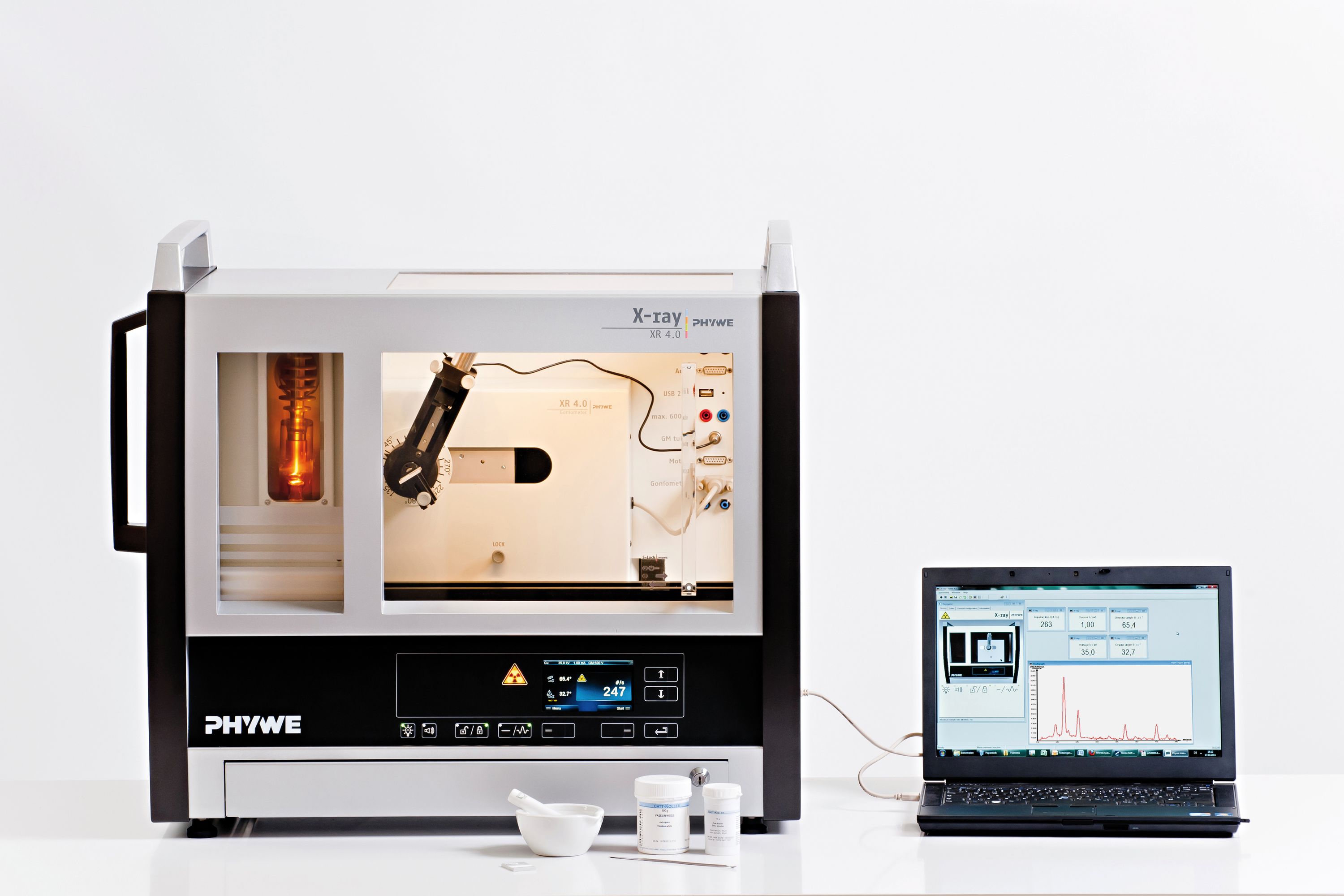Principle
A polycrystalline, cubic face-centered crystallizing powder sample is irradiated with the radiation from a Roentgen tube with a copper anode. A Geiger-Mueller counter tube is automatically swivelled to detect the radiation that is constructively reflected from the various lattice planes of the crystallites. The Bragg diagram is automatically recorded. The intensities of the individual reflex lines are determined and compared with those theoretically expected. In addition, the evaluation allows the Bragg reflexes to be assigned to the individual lattice planes, and both their spacing and the corresponding Bravais lattice type to be determined.
Tasks
- Record the intensity of the Cu X-rays back scattered by a cubic crystallizing copper powder sample as a function of the scattering angle.
- Calculate the lattice plane spacings from the angle positions of the individual Bragg lines.
- Assign the Bragg reflexes to the respective lattice planes. Calculate the lattice constant of the substance and the Bravais lattice type.
- Determine the intensity of the individual reflex lines and compare them with the theoretically expected intensities.
- Determine the number of atoms in the unit cell.
Learning objectives
- Crystal lattices
- Crystal systems
- Bravais-lattice
- Reciprocal lattice
- Miller indices
- Structure factor
- Atomic scattering factor
- Lorentz-polarization factor
- Multiplicity factor
- Debye-Waller factor
- Absorption factor
- Bragg scattering
- Characteristic X-rays
- Monochromatization of X-rays
